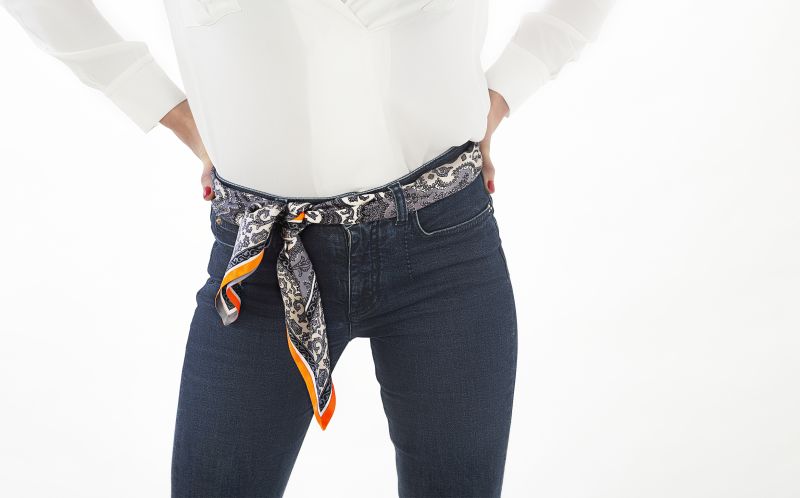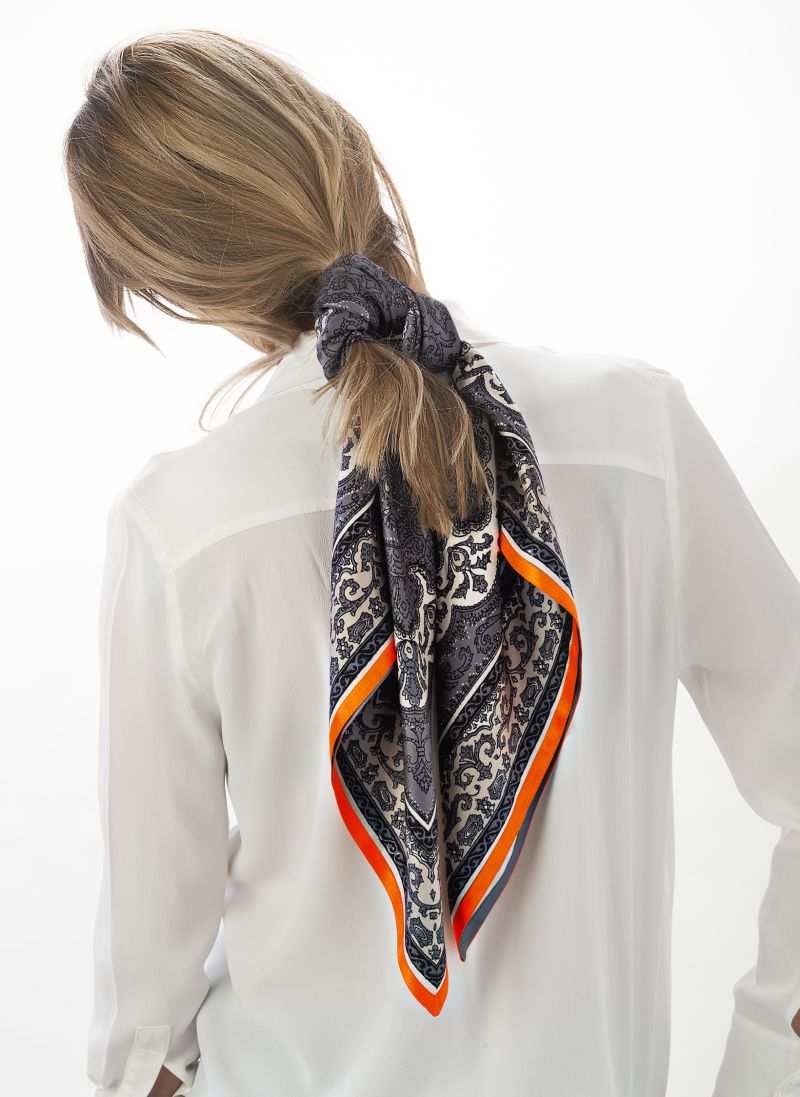Before addressing the topic of fabrics for ties and foulards, we should remember that the Como district is responsible for 75% of the global production of these precious fabrics. Without detracting from yarn or jacquard dyed fabrics used for the production of ties, it is above all with printed fabrics that Como has been able to give wings to creative flair, talent and imagination. This leadership has its roots in the history, culture and textile tradition of Como’s entrepreneurship.
Ties and foulards make a person’s style
It is common knowledge that the accessory, such as a tie or foulard, is created to satisfy the wearer’s desire for vanity, transforming itself into a symbol. It is a game in which the fabric becomes the key point, although accessories are considered an additional element and a tribute to frivolity. An ever-new story is built around the fabric. The most striking example of these dandy textile extravagances is certainly the style of fabrics for ties and foulards chosen to make these accessories by Oscar Wilde, who once wrote “a well-tied tie is the first serious step in life”.
In addition to the ostentation of elegance linked to ties and foulards, these accessories become an indelible statement in the style of a person who carefully chooses the fabric, whether woven or printed, in any case resulting from fluid collaboration between craftsmanship and modern technological innovation. Fabric born at the Como-based companies, later becoming internationally renowned for its creative flair and chromatic sharpness, in addition to that touch of refinement and softness.
Foulard fabrics and designs
Perhaps very few people know that behind their glamorous appearance, fabrics for ties and foulards make a long journey before being worn. A journey that begins with a “purging process” to get rid of impurities, and a subsequent treatment to enhance the steps of dyeing, drying, smoothing, steaming, washing and, finally, finishing. In this production sequence, the protagonists are not only the machinery and technology, but above all, the hand of man and his experience in touching this fabric, enhancing its malleability and sensual softness.
What makes the difference in fabrics for ties and foulards is also the motif, the result of such detailed precision that it seems one with every single fibre.
Tie and foulard colours
A fundamental component of the charm and beauty of fabrics for ties and foulards is colour, essential in itself since it determines the apparent substance of the future accessory, suggests its character and conditions its pairing with other items of clothing. With the evolution of fashion, the colours of fabrics for accessories also experienced a healthy shock, passing from muted and monochromatic shades to elegant, unconventional concessions in support of a kaleidoscope of motifs that, slowly, were gaining ground.
Since the early 1900s, at the height of the jacquard trend, printed motifs have given new speed to the world of fabrics for accessories, introducing the possibility of unlimited creative variations. It is impossible to calculate how many and which motifs have been introduced in the world to date, and how many still remain in the drawers of creative offices. A constant stream of projects designed on paper and placed in sequence with colour variations. A large number of abstract shapes, or motifs modelled on details of reality, that move between trends, fashions and ideas inspired by art, books and magazines, as well as by previous noble fabrics.
In this eclectic world of fabric for ties and foulards, the flair that hovers in style offices plays a fundamental role, and when mixed with the ability to simultaneously interpret the taste and trends of the present era, results in a product that is always in fashion and desirable.
For more detailed information, please refer to the full article“Fabrics for ties and foulards” by Ratti, now a leading world player in the production of high-end fabrics and accessories.
Article Submitted By Community Writer





